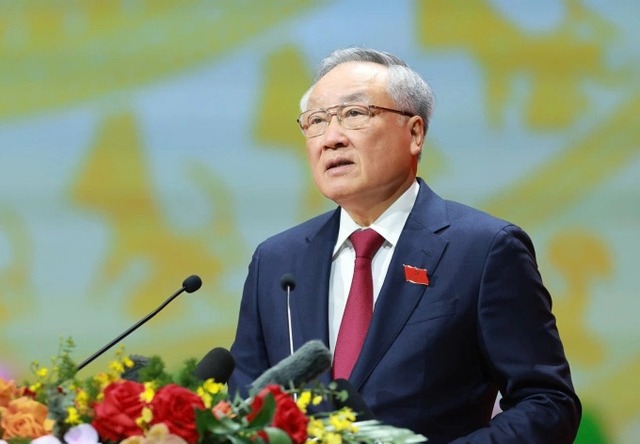Gov’t targets to increase GDP per capita to US$8,500 by 2030
VGP - The Government targets to accelerate annual growth rate to 10 percent and raise GDP per capita to around US$8,500 by 2030, said Permanent Deputy Prime Minister Nguyen Hoa Binh.

Permanent Deputy Prime Minister Nguyen Hoa Binh
Delivering political report at the first Congress of the Government's Party Organization in Ha Noi on October 13, Nguyen said Viet Nam's GDP is estimated to reach US$510 billion this year, ranking 32nd in the world—up five places compared to five years ago.
Per capita GDP has increased by 1.4 times, from US$3,552 in 2020 to over US$5,000 by the end of this year. Based on current prices, per capita GDP is expected to increase about 1.7 times over the next five years.
This year's economic growth is likely to exceed 8 percent, creating strong momentum for the Southeast Asian nation to achieve double-digit growth in the years ahead.
During the 2021–2025 period, State budget revenue is estimated at VND 9.6 quadrillion (US$384 billion), 1.36 times higher than the previous five years and 15.6 percent above the target (VND 8.3 quadrillion). Meanwhile, total trade value expanded steadily and is estimated to reach a record high of US$850 billion in 2025, placing Viet Nam among the world's top 20 trading nations.
Looking ahead, the Government aims to develop a modern national education system on par with regional and global standards, focusing on high-quality human resources, invest heavily in infrastructure and rural development.
Regarding anti-corruption efforts, the Deputy Prime Minister affirmed the Government's determination to ensure there are "grey areas". At the same time, the Government will accelerate digital transformation and gradually implement data-based monitoring and inspection.
To achieve double-digit economic growth in the next five years, the Government will pursue a new growth model, promote industrialization, and restructure the economy, with science, technology, innovation, and digital transformation serving as key drivers.
Inflation will be kept under control, while public debt, government debt, external debt, and budget deficit will remain within safe limits. The Government also plans to promote new growth drivers such as digital and green transformation, circular economy, and emerging industries.
The state sector will continue to play a leading and guiding role, while the private sector will be strengthened as a key driving force of the national economy. FDI projects will be selectively attracted, focusing on technology transfer.
The Government targets to complete the goal of having 5,000 kilometers of expressways by 2030, putting into operation the entire coastal highway, and developing major railway projects such as Lao Cai–Ha Noi–Hai Phong and urban metro lines in both Ha Noi and Ho Chi Minh City (100 km each); and put into operation of Ninh Thuan 1 and 2 nuclear power plants after 2030.
On human resources, the focus will be on building internationally qualified high-skilled workers, particularly in priority sectors and 11 strategic technology fields. The next period will see breakthrough policies to boost science and technology development, targeting the digital economy to account for at least 30 percent of GDP by 2030./.
